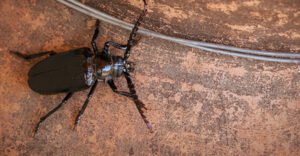Ancestral Edible Insects: Forgotten Traditions
When it comes to food, our ancestors were more adventurous than we often realize. Long before supermarkets and fast-food chains dominated our diets, ancient civilizations embraced a culinary tradition that may seem bizarre today – the consumption of edible insects. Let’s journey back in time to explore the forgotten traditions of ancestral edible insects. These tiny creatures were once treasured as delicacies by our forebearers.
The Role of Insects in Ancestral Diets
Creepy crawlies have been a staple in different societies all through history. They were venerated for their plenitude, dietary esteem, and feasible nature.From crunchy grasshoppers to savory mealworms, insects provided sustenance and held cultural significance. They symbolized fertility, prosperity, and even had medicinal properties.
Global Culinary Traditions Featuring Insects

As we delve into culinary history, we uncover a rich tapestry of insect-based dishes. Ancient civilizations across the globe enjoyed these dishes. In regions such as Asia, Africa, and Latin America, edible insects were common on dining tables. They were prepared in many ways to tantalize the taste buds and nourish the body.
The Decline and Revival of Insect Consumption
Despite their nutritional benefits and cultural value, the tradition of consuming edible insects waned over time. Modern dietary preferences and taboos took over. However, a growing awareness of the environmental impact of traditional livestock farming is reigniting interest in edible insects. They are now seen as a sustainable source of protein for the future.
Rediscovering the Benefits of Ancestral Edible Insects
Ancestral edible insects, forgotten culinary traditions, and ancient insect-based diets are gaining attention again. The cultural significance of edible insects and their potential as a sustainable protein source are being recognized. By integrating these keywords into the article, it becomes more visible to those searching for content on ancestral culinary practices and sustainable food sources.
As we reconnect with the culinary wisdom of our ancestors, perhaps it’s time to embrace the legacy of edible insects. We can rediscover the flavors and benefits they offer. This time-honored tradition may hold the key to a more sustainable and diverse future of food.
Learn More : Astrobiological Diets: What Could We Eat on Exoplanets




